
Advances in Pediatric Research
Open Access
ISSN: 2385-4529

ISSN: 2385-4529
Research Article - (2024)Volume 11, Issue 1
Introduction: The family is an institution and the teaching-learning process is a unit that aims to contribute to the integral formation of the student’s personality. Hence the need for school-home are closely linked in the education of future generations.
Objective: To assess the difficulties that influence the teaching and learning process and the role of the family.
Materials and methods: Cross-sectional descriptive study, in which a survey was applied to 1st year nursing students.
Results: The variables presented in the survey were analyzed for a total of 59 respondents (20.3%). 33.8% live with their mothers in both sexes. The level of schooling of their families is average technical for 44.06%. In another group, students study at university level for 30.5%, as the family influences the forms or ways of studying. The student of nursing emphasizes that they prefer to study alone for 50.8%, each member of the family is unaware of the testing days of their children. Another important factor that affects the teaching-learning process for 62.7%, the age of 15 years for 66.1%, the most affected sex for 54.2%. The main factor that prevents the correct learning of the nursing student are discussions at home for 54.2%.
Conclusions: In the present research, the family, the primary factor that fosters in the nursing student feelings, qualities and values, the harmonious conjugation of them, simplifies the qualities that are desired in the child and youth that we educate in today’s school.
Adolescence; School; Educational; Children; Family
In recent years, the historical social context has changed substantially, being subjected to continuous transformations. The revolution has exerted a great influence on the family and more favorable conditions have been created for the achievement of a close collaboration between institutions and schools, in the education of students and on the treatment of their children under certain circumstances [1].
Adolescence is a traffic age. But it is also a concrete period of life, where transcendental learning is achieved, without which one cannot reach a mature and responsible adulthood.
Throughout our lives, from childhood to adolescence we begin to assimilate all the experience that humanity has accumulated so far. In the later phase, the family plays a very important role as a communicator, but in the development of the teaching process-learning, the family continues to contribute to the acquisition of knowledge, the intellectual and physical development of the adolescent and the formation of feelings, qualities and values.
The family is an institution and the teaching-learning process is a unit whose purpose is to contribute to the integral formation of the student’s personality (integration of the instructive and the educational) but both are at the service of human life [2,3]. The family, because of its natural environment, is respected or recognized by the formal acquisition of knowledge in the home, constitutes the first social nucleus with which it enters contact the child, in its experiences for the first time experiences of life collectively and begins its education. From this follows the need for school-home are closely linked in the education of future generations, that the educator establishes close relations with the home of the students to know the environment in which they develop and recover from the parents the closest concern for the achievement of the goals of education. However, the school in its social projection (teachinglearning process) cannot be alien to the family environment. The truth is that there is no alternative to replace the family. It is the first area of human life and the teaching-learning process. That is why we set ourselves the fundamental objective of assessing the difficulties that influence the needs within the teaching and learning process in the role of the family [4,5].
Objectives
• General: Assess the difficulties that influence the teaching and learning process in the role of the family.
• Specific: Identify the number of dysfunctional family of 1st year nursing students.
• Determine the age groups and sex of greatest incidence.
• Identify the sex that expresses greater vocation for the nursing profession.
• Highlight the most significant factors that prevent the correct learning of the nursing student.
A cross-sectional descriptive study was conducted, in which a survey was applied to 1st year nursing students from the Faculty of Medical Sciences Geneva. Calixto Garcia Iniguez conducted a study, where the total enrollment is 290 for a 100%. But this survey was only applied in 3 brigades which are 9.1.8, 9.1.11 and 9.1.12 being our accounting sample for a total of 59 respondents for a 20.3%. Evaluating variables such as: with whom you live, level of schooling of your family, knowledge of your family from your test days and other family variables by obtaining the number of dysfunctional families that exist and the main factors that prevent the correct learning of nursing students. The most affected age and sex were also assessed. The work was complemented by the bibliography of our teachers. The data was processed using the Microsoft access program and the tables were processed by Microsoft excel.
The following variables presented in the survey were analyzed through the responses of the students as the family influences the teaching-learning process of the nursing student. Findings from Table 1 and Figure 1 expose the family coexistence of nursing students where 20 students for 33.8% live with their mothers; the most male and female nursing students prefer to live with their mothers. Table 2 and Figure 2 analyses the level of schooling of their families, showing that in 26 students, the average technician predominated as the level of schooling was achieved by 44.06% and in 18 students the level achieved by university was 30.5%. We can note that the level of schooling is another influential factor in the correct learning of the student. Table 3 and Figure 3 reflects the vocation of students for the profession highlighting that the female sex is more related to the career. Out of 29 students, judging by the number of students who always enter schools, the female sex always goes above the male sex prevailing the female sex. Table 4 and Figure 4 indicate the relationship between the family and the study, as it influences the forms or ways of study of the nursing students highlighting that 30 students prefer to study alone for 50.8%. This reflects that these do not receive support from each family member in terms of study. Table 5 and Figure 5 indicate the knowledge each member of the family has of the days of examinations of nursing students. 37 students report that each family member is unaware of their test days, another important factor affecting the teaching-learning process for 62.7%. Table 6 and Figure 6 show the most affected ages, with students aged 15 being the most affected of about 66.1% followed by students aged 16 and 18. Noting that we must work more with students to get the maximum results in them as there are so many factors that impact on their learning as future nurses(s) and even more with students who are in the stage of adolescence, that still do not know what they want to be in the future. Table 7 and Figure 7 represents the sex most affected being the male sex of 54.2% due to the low interest in studies and the low motivation shown for the nursing profession. Table 8 and Figure 8 represent the main factors that prevent the correct learning of our students being the discussions at home. The factor that most affects them, pointed out by 32 students from the headquarters for 54.2%, that is why we must work on this so that this factor so prevalent among student’s decreases. Leaving out the main objective of our work we can reaffirm that due to the bank of problems that affect the correct learning of the nursing student, the number of dysfunctional families that exist corresponds to the number of respondents 59 students from the headquarters for about 100%.
| Cohabitation | Female | Male | Total | Percentage (%) |
|---|---|---|---|---|
| Mother | 11 | 9 | 20 | 33.8 |
| Father | 7 | 5 | 12 | 20.3 |
| Both | 5 | 5 | 10 | 16.9 |
| Others | 10 | 7 | 17 | 28.8 |
| Total | 33 | 26 | 59 | 100 |
Table 1: Co-existence of nursing students with family.
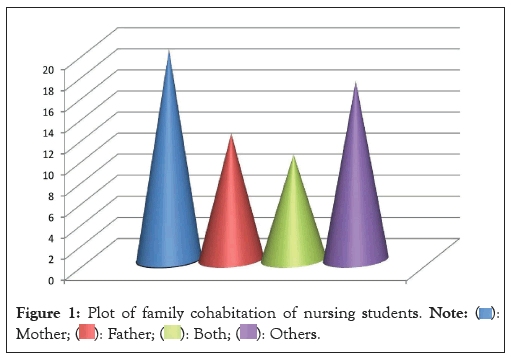
Figure 1: Plot of family cohabitation of nursing students. 

| Level of education | Number of students | Percentage (%) |
|---|---|---|
| Illiterate | - | - |
| 6th | - | - |
| 9th | 5 | 8.4 |
| 12th | 10 | 16,9 |
| Medium technical | 26 | 44.06 |
| University | 18 | 30.5 |
| Total | 59 | 100 |
Table 2: Educational level of the family members.
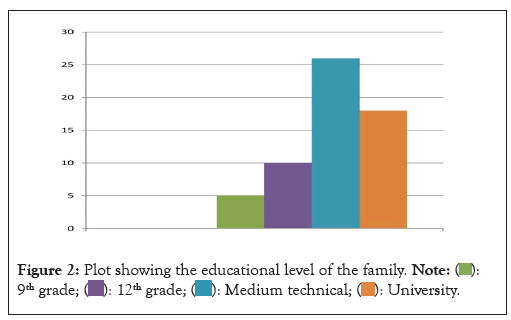
Figure 2: Plot showing the educational level of the family. 

| Vocation | Female | Male | Total |
|---|---|---|---|
| Yes | 29 | 21 | 50 |
| No | 4 | 5 | 9 |
| Total | 33 | 26 | 59 |
Table 3: Vocation for the profession.
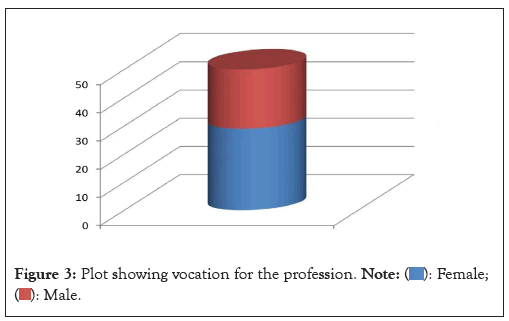
Figure 3: Plot showing vocation for the profession. 

| Family integrants | Number of students | Percentage (%) |
|---|---|---|
| Mother | 5 | 8.4 |
| Father | 5 | 8.4 |
| Single | 30 | 50.8 |
| Both | 10 | 16.9 |
| Others | 9 | 15.2 |
| Total | 59 | 100 |
Table 4: Support of family members in the study.
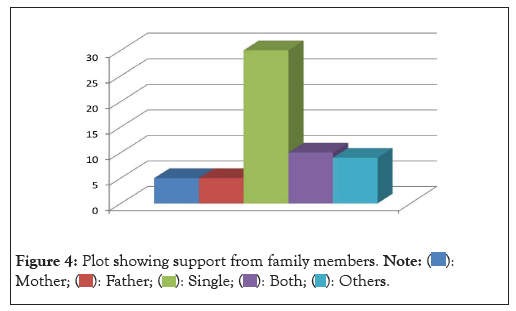
Figure 4: Plot showing support from family members. 

| Knowledge of exam days | Number of candidates | Percentage (%) |
|---|---|---|
| Yes | 37 | 62.7 |
| No | 22 | 37.2 |
| Total | 59 | 100 |
Table 5: Family members' knowledge of student exam days.
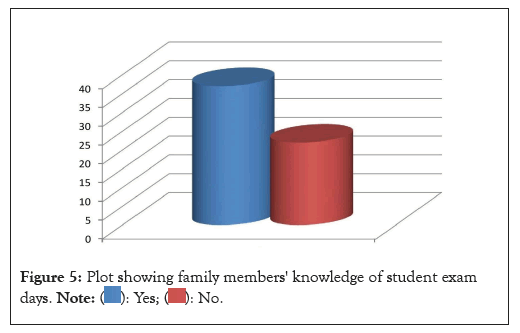
Figure 5: Plot showing family members' knowledge of student exam
days. 
| Ages | Number of students | Percentage (%) |
|---|---|---|
| 15 | 39 | 66.1 |
| 16 | 7 | 11.8 |
Table 6: Age groups which are most affected.
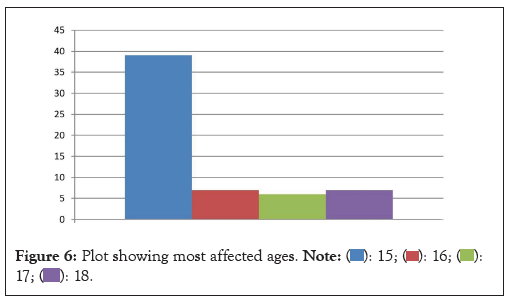
Figure 6: Plot showing most affected ages. 

| Sex | Number of students | Percentage (%) |
|---|---|---|
| Female | 27 | 45.7 |
| Male | 32 | 54.2 |
Table 7: Gender which is most affected.
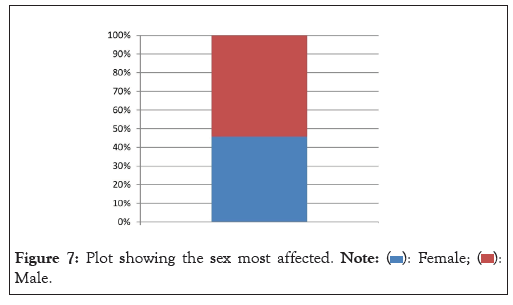
Figure 7: Plot showing the sex most affected. 

| Factors | No of students | Percentage (%) |
|---|---|---|
| Economic situations | 5 | 8.5 |
| Discussions | 32 | 54.2 |
| Alcoholism | 8 | 13.5 |
| Separation of parents | 7 | 11.8 |
| Others | 7 | 11.8 |
| Total | 59 | 100 |
Table 8: Factors that prevent the correct learning of the student at home.
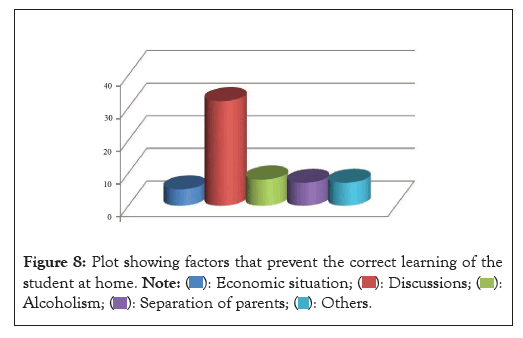
Figure 8: Plot showing factors that prevent the correct learning of the
student at home. 

Because the family has an impact on the nursing students' learning and teaching, the responses of the students were used to analyze the survey's variables. The majority of nursing students, both male and female, would rather live with their mothers [6]. Another influential factor in a student's correct learning is the level of education. The proportion of female students entering schools consistently out numbers male students. A large portion of students like to concentrate alone as they do not receive support from their families. The sex most impacted in examinations is the male sex because of the low interest and the low inspiration displayed for the nursing calling. The primary factors that forestall the right learning of our understudies are the discussions at home. We should chip away at this so this variable so pervasive among understudies diminishes. More consideration should be taken with students to obtain the greatest outcomes in them as there are such countless variables that influence their advancing as future nurses [7]. Significantly more consideration ought to be taken with students who are in the adolescent age as they actually do not think of what they want to grow up to be.
Educational work is the set of socio-political activities aimed at influencing the formation of the personality of man. It is an essential part for the development of the teaching and learning process in nursing students for the achievement of satisfactory results. We must encourage each family member the concern for the student and the interest in the school. There is a greater homeschool relationship and vice versa directed to the orientation of each activity carried out in school with students as: knowledge of the days of examinations of their children, to know which is the subject that offers the greatest difficulty in the student and to work on this through a plan of measures to arouse interest in the subject, sometimes it is a lack of motivation, to hold parent meetings frequently, encourage parents and students to be motivated by nursing careers, involving the family together with the student of the role to be performed by the student after graduation.
Develop activities aimed at linking home to school, managing to include parents in the organizing committees of the student nursing science days, in the conduct of monthly parent meetings for the analysis of their children in the month, valuing behavior in these groups, holding talks and including reflection and discussion sessions on topics relating to the behavioral habits of young people in society, including parents, in the latter to make materials for the political and ideological work of young people including parents in that activity, the latter support us with their experiences [8].
In each group, create semigroups to reduce the work of the teacher guide and make effective the political, ideological, educational and academic development of nursing students to be attended directly. Conduct a workshop on local history to include parents [9]. Monthly group analysis is performed and highlight the best performing student by extending it to the workplaces or institution of their parents and thus achieve the participation and motivation of each student post improvement.
Working together home-school and vice versa for the achievement of positive results is the commitment of all.
In this paper, the following variables were presented in the survey answered by the 1st year students of nursing, belonging to the Faculty of Medical Sciences Gen. Calixto García Iñiguez threw out the following answers allowing him to give way to the objectives proposed by the same. The support of the family during the teaching and learning process of the nursing student is of vital importance for the development and achievement of good results in them, not being so, by the various difficulties faced by the student, obtaining that the sample surveyed coincides with the number of dysfunctional families, where the ages and the sex most affected, when there is no support for each of the family members was the male sex and the students whose age is 15 years, where the female sex presents a vocation for this career note that the main factor affecting the correct learning of the student, when surrounded by his loved ones are family discussions.
In the child and the youth that we educate, the high qualities that the communist man desires must be formed, but not as a mechanical sum of all good traits and qualities, but as the harmonious conjugation of them. Therefore, we must continue to work with the primary factor that fosters in the nursing student the most important feelings, qualities and values as it is: the family.
Citation: Morales YS, Acos SB (2024) Teaching and Learning Needs in Nursing Students: Role of the Family. Adv Pediatr Res. 11:073.
Received: 06-Feb-2024, Manuscript No. LDAPR-24-29259; Editor assigned: 08-Feb-2024, Pre QC No. LDAPR-24-29259 (PQ); Reviewed: 22-Feb-2024, QC No. LDAPR-24-29259; Revised: 29-Feb-2024, Manuscript No. LDAPR-24-29259 (R); Published: 07-Mar-2024 , DOI: 10.35248/2385-4529.24.11.073
Copyright: © 2024 Morales YS, et al. This is an open-access article distributed under the terms of the Creative Commons Attribution License, which permits unrestricted use, distribution, and reproduction in any medium, provided the original author and source are credited.